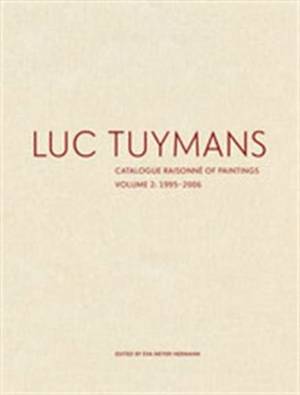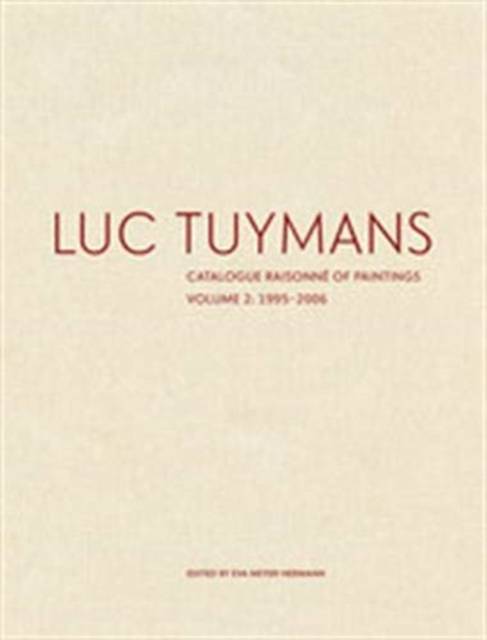
- Afhalen na 1 uur in een winkel met voorraad
- Gratis thuislevering in België vanaf € 30
- Ruim aanbod met 7 miljoen producten
- Afhalen na 1 uur in een winkel met voorraad
- Gratis thuislevering in België vanaf € 30
- Ruim aanbod met 7 miljoen producten
Zoeken
€ 220,00
+ 440 punten
Omschrijving
Over the course of four decades, Belgian painter Luc Tuymans has created his own distinctive vernacular, a new visual vocabulary. The second volume in a catalogue raisonné of Tuymans’s paintings surveys nearly two hundred works, including some of his most iconic canvases.
Between the years 1995 and 2006, Tuymans’s work trended toward ideas of national and collective memory. In 1996, the artist created a group of ten paintings entitled The Heritage, for which he transformed familiar images of American life, such as Mount Rushmore, baseball caps, and the United States flag, into unsettling visions, addressing the country’s perceived vulnerability, both physical and psychological, following the 1995 Oklahoma City bombing. Paintings from Mwana Kitoko: Beautiful White Man, his seminal body of work that was first shown at David Zwirner, New York, in 2000, after which he expanded the series for his presentation for the Belgian Pavilion at the Venice Biennale in 2001, depict imagery derived from the fraught history of Belgian colonial rule of the Democratic Republic of the Congo. Also included is one of Tuymans’s best-known paintings, The Secretary of State (2005), a powerful yet seemingly vulnerable portrayal of Condoleezza Rice, which conjures the long history of racial and sexual prejudice in the United States, not as something that has been overcome, but as an active force shaping our reality.
This volume includes an editor’s note by Eva Meyer-Hermann and an illustrated chronology with archival images and installation views of the featured works. It also presents brilliant color reproductions of each painting from this period. This publication is a testament to Tuymans’s persistent assertion of the relevance and importance of painting— a conviction that he maintains even in today’s digital world, when his work continues to be a touchstone for artists and scholars.
Between the years 1995 and 2006, Tuymans’s work trended toward ideas of national and collective memory. In 1996, the artist created a group of ten paintings entitled The Heritage, for which he transformed familiar images of American life, such as Mount Rushmore, baseball caps, and the United States flag, into unsettling visions, addressing the country’s perceived vulnerability, both physical and psychological, following the 1995 Oklahoma City bombing. Paintings from Mwana Kitoko: Beautiful White Man, his seminal body of work that was first shown at David Zwirner, New York, in 2000, after which he expanded the series for his presentation for the Belgian Pavilion at the Venice Biennale in 2001, depict imagery derived from the fraught history of Belgian colonial rule of the Democratic Republic of the Congo. Also included is one of Tuymans’s best-known paintings, The Secretary of State (2005), a powerful yet seemingly vulnerable portrayal of Condoleezza Rice, which conjures the long history of racial and sexual prejudice in the United States, not as something that has been overcome, but as an active force shaping our reality.
This volume includes an editor’s note by Eva Meyer-Hermann and an illustrated chronology with archival images and installation views of the featured works. It also presents brilliant color reproductions of each painting from this period. This publication is a testament to Tuymans’s persistent assertion of the relevance and importance of painting— a conviction that he maintains even in today’s digital world, when his work continues to be a touchstone for artists and scholars.
Specificaties
Betrokkenen
- Auteur(s):
- Uitgeverij:
Inhoud
- Aantal bladzijden:
- 456
- Taal:
- Engels
- Geïllustreerd:
- Ja
Eigenschappen
- Productcode (EAN):
- 9781941701959
- Verschijningsdatum:
- 28/03/2019
- Uitvoering:
- Hardcover
- Afmetingen:
- 232 mm x 305 mm
- Gewicht:
- 3800 g

Alleen bij Standaard Boekhandel
+ 440 punten op je klantenkaart van Standaard Boekhandel
Beoordelingen
We publiceren alleen reviews die voldoen aan de voorwaarden voor reviews. Bekijk onze voorwaarden voor reviews.








